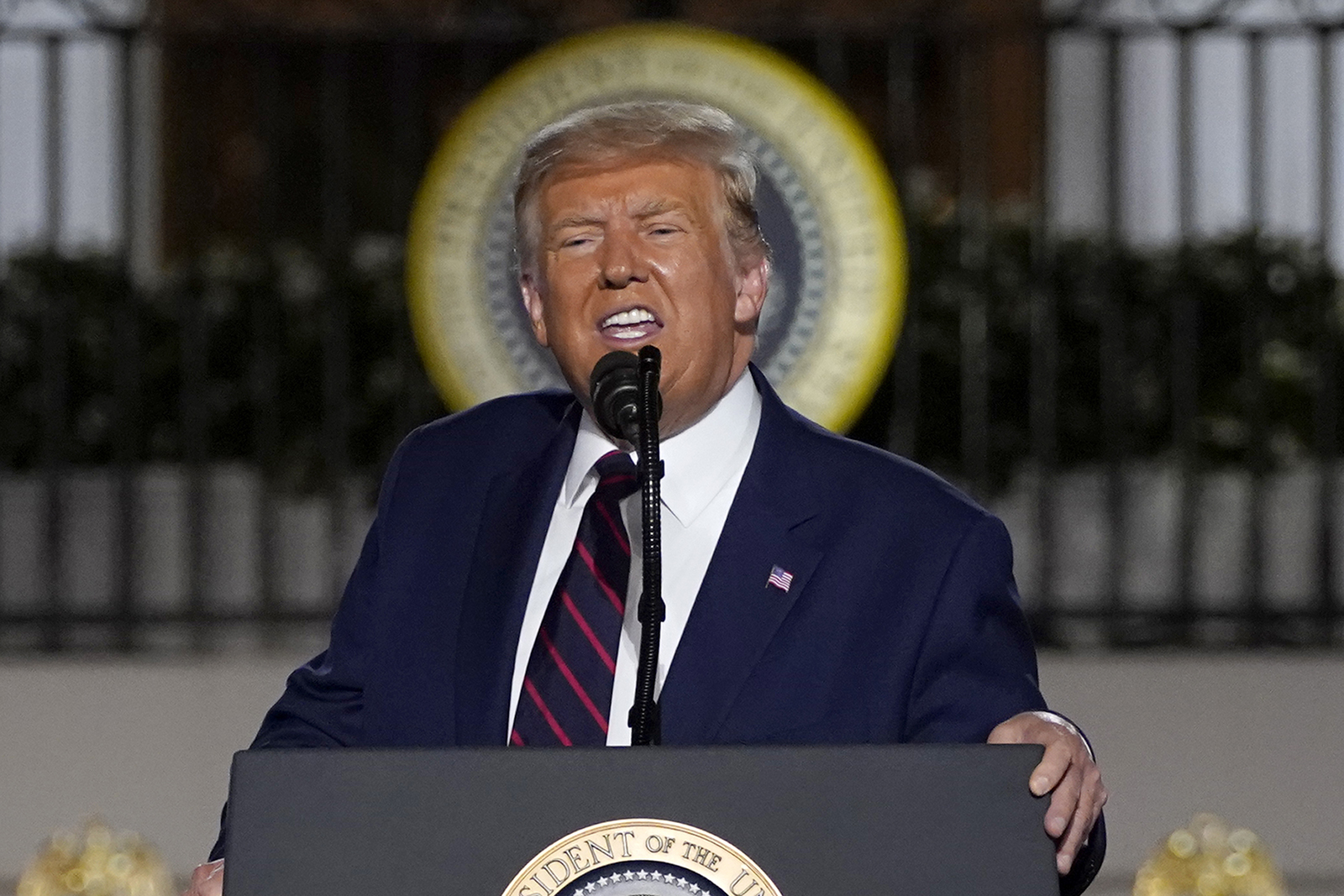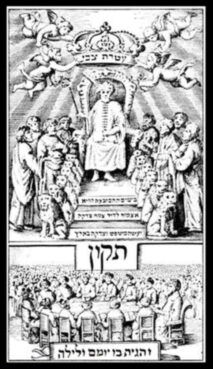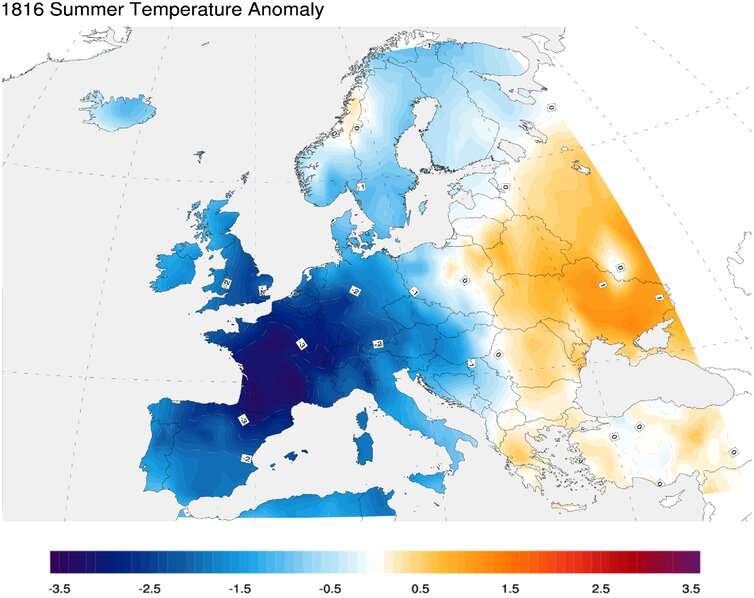The Great Orthodox Battle Amid the Russian Invasion
How can the Russian Orthodox Church exert influence in Ukraine with its leader’s clear support of the invasion?

The history of the Ukrainian Church is rich and dates back to the times of Kyivan Rus and Prince Volodymyr the Great. They received Christianity from Constantinople in 988, a watershed event that spiritually united the Ukrainian nation. Through centuries, it has also fueled Russia’s obsession to exert more control over Ukraine, rewrite history based on cynical lies and try to establish its religious dominance in its near abroad and far beyond it. In times of war, religion plays one of the most pivotal roles in uniting people and helping them believe in peace and good.
Editor’s Pick: The Battleground for Ukraine’s Liberal Soul
The Church can serve as a soft power instrument to justify war crimes, sow more hatred and cause more social divisions. The never-ending battle for ‘hearts and minds’ not only between the Ukrainian Orthodox Church (UOC) vs the Russian Orthodox Church (ROC) but also between the whole Orthodox global community vs the Russian Orthodoxy seems to be reaching its peak amid the Russian invasion. Who will be the winner?
How is Putin instrumentalising religion as his tool during the invasion? Can the Church become a robust and reliable peace actor that can be conducive to the conflict resolution in Ukraine and the unity of the Ukrainian nation in the battle for sovereignty? Is there any future for the ROC, Patriarch Kirill and the Ukrainian Orthodox Church of the Moscow Patriarchate (UOC MP
The Russian Orthodox Church — A Dangerous Player
The strong national aspirations of the Ukrainian Church and the religious diversity demonstrate that Ukraine is one of the most religious countries in Europe. Indeed, its Church is a potent soft power instrument for uniting people in challenging times. Social polls show that 63.5 per cent of Ukrainians trust the Church, even more than the authorities.
The Ukrainian religious landscape is unique and known for its ecumenical cooperation despite inter-church misunderstandings that occur from time to time. The unique structure, namely, the All-Ukrainian Council of Religious Churches and Associations of Ukraine, unites various religious denominations (three Orthodox churches, the Greek-Catholics, the Roman Catholics, Protestants, Anglicans, Lutherans, Pentecostals, Baptists, Jews and Muslims). The organisation grants chairmanship every six months to each denomination that symbolises the true essence of the religious freedom guaranteed by the Constitution of Ukraine.
Now, in times of war, there is a more dangerous outside player than ever, encroaching on Ukraine’s spirit — the Russian Orthodox Church (ROC), one of the most potent weapons in Putin’s hybrid warfare toolbox, dubbed as the ‘supplier’ of the Kremlin’s ideology. It has always been a vital instrument of the Russian foreign policy in promoting ideas of the so-called ‘Russian World’ and justifying Putin’s aggression and imperialism. Dr Cyril Hovorun explains Putin’s formula of all his wars: ‘Putin’s regime supplies guns, the church supplies ideas.’
After centuries of religious oppression, the Ukrainian Church became more united than ever after the illegal annexation of Crimea and the Russian hybrid war in Eastern Ukraine in 2014. The Revolution of Dignity was a catalyst for uniting various churches that acted as mediators. Ukraine’s inspiration to have an independent national church came as a natural and logical process. But the Ukrainian state lacked a piece to complete its complicated puzzle on the path of breaking away from the Russian orbit of influence toward true European civilisation.
After unsuccessful attempts to get canonical independence, on 9 January 2019, a remarkable event occurred — the Ecumenical Patriarchate Bartholomew, ‘first among equals,’ signed the Tomos (a decree of independence) in Istanbul. As a result, the newly-established Orthodox Church of Ukraine was granted its canonical independence from the Russian Church after seven centuries.
It united the Ukrainian Orthodox Church of the Kyiv Patriarchate (UOC KP), Ukrainian Autocephalous Orthodox Church (UAOC) and some parishes of the Ukrainian Orthodox Church of the Moscow Patriarchate (UOC MP). Metropolitan Epifaniy became Head of the new denomination, pointing out that — ‘the Russian Orthodox Church is the last advance post of Vladimir Putin in Ukraine and that the appearance of the OCU undercuts the imperial goals of the leader in the Kremlin.’
This canonical independence was considered an affront to the Kremlin’s worldview that deems Ukraine as a failed state and Ukrainians as a second-class nation. Thus, the reaction of the ROC was predictable: it unilaterally severed ties with the Ecumenical Patriarch, Bartholomew I and the churches of Greece, Cyprus and Alexandria, which recognised the independence of the Ukrainian Church. It was just a mere act of retaliation that Patriarch Theodore II of Alexandria, who has ecclesiastical jurisdiction in Africa, recognised the independence of the Ukrainian Church.
The Tomos has undermined, to some extent, the ROC’s influence in Ukraine before the invasion. It strengthened Ukraine’s independence and united Ukrainians spiritually. At the same time, it led to the further radicalisation of the ROC, nourishing Kirill’s obsession with accusing the West of dismantling Orthodox unity and his desire to establish Moscow’s dominance in the Orthodox world. He was a long-time staunch ally of Putin’s plan, who justified and fully abetted the Russian invasion since its very start. As for the ROC, this war is against sin, imminent threats from the liberal West, ‘gay parades,’ and ‘excess consumption.’ It is a crusade to defend the divine law and ‘tried-and-true’ conservative values. Anyone opposed to the so-called ‘special military operation’ automatically becomes a pagan enemy.
Putin’s Religious Rationale for Invading Ukraine
Behind Putin’s ostentatious piety, there is a clear goal to fill the ideological void after the collapse of the Soviet Union and create a new, purely Russian identity, ‘defending’ its values and all Russians in the world.
2021 Putin’s ‘notorious’ essay on the ‘Historical Unity of Russians and Ukrainians‘ showcased the imperialistic ambitions of the Kremlin’s dictator from many convoluted angles, particularly the spiritual one: ‘Most importantly, people both in the western and eastern Russian lands spoke the same language. Their faith was Orthodox. The unified church government remained in place until the middle of the 15th century. The secular authorities, making no secret of their political aims, have blatantly interfered in church life and brought things to a split, to the seizure of churches, the beating of priests and monks. Even extensive autonomy of the Ukrainian Orthodox Church while maintaining spiritual unity with the Moscow Patriarchate strongly displeases them. They must destroy this prominent and centuries-old symbol of our kinship at all costs.’
On 21 February, an hour-long lecture by Putin on his personal beliefs on history endorsed the distorted religious subtext of this war as well: ‘In Kyiv, they are preparing reprisals against the Ukrainian Orthodox Church of the Moscow Patriarchate. Ukraine is not just a neighbouring country for us. It is an inalienable part of our history, culture and spiritual space.’
But it is the Russian invaders who continue to destroy the religious sites. Even the Svyatogorsk Lavra, a symbolic church for the ROC, was shelled and burned down, having claimed the lives of three priests. The Russian troops bombed Mariupol levelling everything in the city, including sacred sites. A Ukrainian priest, Father Pavlo Tomaszewski, managed to escape. He gave the following testimony ‘They bombed and shelled us without any break for four days — since our monastery had no cellar for hiding in, we could see tall apartment blocks exploding in front of us…By the end, we had lost contact with parishioners or the outside world.’
The Orthodox Wingman of Putin’s Regime
Kirill is a big fan of boasting Russian Orthodoxy’s might, its new identity intertwined with Putin’s militarism. A symbol of this new might was introduced to the general public in 2020 — the Main Cathedral of the Russian Armed forces, rumoured to have cost more than 80 mln dollars.
Its mosaics depict all of Russia’s wars and military interventions. Paradoxically, the idea behind creating such a shrine belongs not to Kirill but to Russia’s defence minister, Sergei Shoigu, who hopes to add more mosaics regarding what is happening now. This likeness of the Church was another religious symbol of the upcoming invasion with nostalgic tones for its grandeur during the Great Patriotic War.
On 23 February, Defender of the Fatherland Day, a symbolic holiday for Putin, the Primate of Moscow and all of Russia, Kirill (Volodymyr Gundyaev) warmly congratulated the Kremlin’s leader, pointing out his active role in ‘preserving national historical memory and affirming the principles of traditional morality in the lives of contemporaries.’
Such a gentle hint at future ‘defence’ of Russia’s ‘historical’ borders in the face of non-existent threats was thrown by one of the spiritual creators of the doctrine of the ‘Russian World,’ the embodiment of Putin’s ethnic cleansing. After the unjustified invasion, he continued to echo standard Russian propaganda ‘grand’ narratives in his sermons. On 28 February, he cynically prayed for peace in ‘Russian lands,’ including Russia, Ukraine and Belarus.
In his homily, delivered on 6 March before the start of Orthodox Lent, he accused the West of the atrocities in the Donbas region for the last eight years without breathing a word about the current war atrocities in Ukraine: ‘Today, our brothers in the Donbas, Orthodox people, are undoubtedly suffering, and we cannot but be with them, first of all in prayer. It is necessary to pray that the Lord would help them preserve the Orthodox faith, not succumbing to temptations and temptations.’
He openly ignited Putin’s religious purge in his sermon speeches at a metaphysical level. He deliberately avoided the word ‘war’ but used euphemisms such as ‘military actions’ or, more generally ‘, events’. Moreover, he even gave a military icon to the Director of the Russian Guard of the Russian Federation, General Viktor Zolotov, to inspire young soldiers. One example of this blind veneration of the Russian state ideology espoused by the Kremlin was a symbol Z on Easter cakes to support Russian soldiers in their ‘noble mission.’
However, Patriarch Kirill, Putin’s spiritual advisor, insists that there is no invasion of Ukraine but a battle against ‘external and internal enemies,’ ‘Neo-Nazis’ who are in the way of the historic ‘unity’ between the Slavs of Russia, Ukraine, Belarus.
UOC-MP Versus UOC: Is Mutual Understanding Possible?
This war was a great challenge for the UOC-MP, which mirrored and cherished Russian propaganda in Ukraine before the invasion on a large-scale basis and did not speak out during eight years of the undeclared Russian war. Its interests were lobbied by the pro-Russian oligarch from Mariupol, Vadim Novinsky, who was ordained a deacon by Onufry. It is no surprise that now the position of the UOC-MP and its further steps are monitored under a microscope as it has been a vital propaganda instrument in the Kremlin’s hands.
Since the start of the war, the Primate of the UOC-MP Onufri supported the Ukrainian soldiers. It appealed to Putin to stop the fratricidal war, comparing the invasion with the sin of Cain.
Before the Easter holidays, Onufri suggested holding a religious procession to ‘Azovstal’ in Mariupol to contribute to the resolution of the tragic humanitarian crisis there. Still, it was not accepted by the Russian side.
It is worth mentioning that the influence of the UOC-MP is stronger than the UOC even after the Tomos. It has more parishes across Ukraine than the UOC, more than 12 000, and still plays a considerable role for most Orthodox Christians in Ukraine. However, this war has caused a max exodus from the UOC-MP. Most of its parishes are joining the UOC rapidly, and most of the clergy, bishops, and lay people are appalled by Kirill’s distorted religious backing of the invasion. Meanwhile, Rovenkivska Diocese in the Luhansk region, Crimea, and Sevastopol Diocese refused to cut their ties with the ROC, which will definitely strengthen Russian influence on the temporarily occupied territories and further impose ideas of the so-called ‘Russian World.’
In temporarily-occupied parts of the Donbas region and Crimea, all Christian denominations — except those that fall under the MP jurisdiction — were brutally persecuted by the ROC.
Appeals from the dioceses of the UOC-MP to bishops not to commemorate Kirill in the Liturgy sound louder each day. However, top-ranking clerics hesitate to join this symbolic protest. Some continue to put their signatures on the petition to convene an inter-church court over Kirill. The procedure is complicated and lengthy but sends a clear-cut signal to the Primate of the Moscow Church that his stance will not go unnoticed and he will face judgement. Some went further: the Volodymyr-Volyn eparchy called upon Metropolitan Onufry to convoke an All-Ukrainian council to petition Patriarch Kirill for autocephaly.
However, autocephaly for the UOC-MP is a distant prospect that can last centuries. The UOC is a living example of it. There is still a powerful pro-Russian lobby of the UOC-MP that supports the ROC. One vivid example is the dean of one of the Mariupol districts of the UOC-MP warmly greeting a puppet leader of the so-called DNR, Denis Pushilin and the Russian invaders.
Fr. Andrii Pinchuk strongly criticised Kirill’s rhetoric, alluding to the historical precedent when phyletism was condemned in 1872 at the Council of Constantinople. He said, ‘We are convinced that the idea of ‘Russkyi mir’ should be condemned, which is essentially a kind of ethnophiletism, which puts national and political interests above religious ones.’
On 27 May, the Local Council of the Ukrainian Orthodox Church declared complete independence from the ROC. The UOC-MP did not cut its ties with its mother church, ROC, but ultimately rejected Patriarch Kirill’s stance on the invasion of Ukraine and called to stop bloody atrocities without indicating the name of the aggressor country. Amendments were made in the Statute (as of writing, it is not officially published yet), but it is just the facade without the exact outcome.
Metropolitan Epiphanius of the UOC insists on further dialogue and creating a one and only Ukrainian Orthodox church to beat the aggressor. The support from civil society for such unity is more prominent than ever. This seems to be the only viable solution, but neither of the churches wants to give up its position and prefers to sit on the fence.
There is also the option to join a possible Ukrainian exarchate of the Ecumenical Patriarchate of Constantinople if there is a will of the Ecumenical Patriarch to intervene. However, it can add fuel to the war and will be perceived by Moscow as further encroachment on its daughter church.
International Reaction and the Role of Pope Francis
Patriarch Kirill’s abetment of the Kremlin’s war machine and war crimes has united not only Ukrainians but also world Orthodoxy in the face of his claims and blatant violation of God’s Commandments, particularly the sixth one ‘thou shalt not kill.’ Kirill’s rhetoric shook and shocked Orthodoxy across the globe. The appeal from Human Rights Without Frontiers calls for action ‘to hold personally accountable and prosecute Vladimir Mikailovitch Goundiaiev, known as Patriarch Kirill of Moscow and All Russia, for inspiring, inciting, justifying, aiding and abetting war crimes (Art. 8 of the Rome Statute) and crimes against humanity (Art. 7) perpetrated and being perpetrated by the Russian armed forces in Ukraine.’
Hundreds of Russian Orthodox clerics signed a letter calling for a halt to the war. ‘The life of every person is a priceless and unique gift of God, and therefore we wish for the return of all soldiers — both Russian and Ukrainian — to their homes and families safe and sound.’
Pope Francis is the most influential figure in the Orthodox world who can influence the war’s outcome. He can play a crucial role in the war, if not by stopping it, but by at least mitigating it with various diplomatic channels at his hand. But it is not as simple as it seems. His rhetoric was a bit ambiguous from the start. He did not directly rebuke Putin but put a pinch of the blame on NATO for ‘barking at the gates of Russia,’ leaving no other choice for Russia but war. However, during the video conference on 16 March, the Pope asked Kirill not to be ‘Putin’s altar boy’ as the language of politics is not the language of Jesus. The pontiff also appealed to Putin to lift the blockade of Ukraine’s Black Sea ports — ‘heartfelt appeal not to use wheat, a basic foodstuff, as a weapon of war,’ pledging to find any diplomatic means to stop this bloodshed.
‘Do Not Venerate Idols — Venerate Only God’
The religious subtext of the current war is vital and should not be ignored in trying to understand the rationale behind Putin’s invasion. There are many reasons behind the war, and religion is one of them. Orthodox unity in the face of Russia’s invasion is set to be tested more than ever. Various religious denominations across the globe will further support Ukraine in resolving the severe humanitarian crisis and helping Ukrainian refugees. It is a practical manifestation of genuine Orthodoxy as a tool of peace within itself, unlike the pernicious Russian Orthodoxy, pitting nations against each other.
The UOC voice will get stronger, and there is a window of opportunity to be recognised by other churches. But, the chasm between the ROC and the Western Church will be hard to overcome soon.
Putin has subsidised the ROC to restore its ‘greatness,’ and the church ‘repays’ by ideologically supporting Putin’s aggression. This Russian National Orthodoxy is aimed at crushing not only any dissent at home but advancing its ideas abroad and acting as an ‘alternative’ to the liberal West’s ‘decadent civilisation.’
Ukraine is just the initial phase in this grand ‘religious crusade.’ The ROC and Putin aim higher, seeking the restoration of the Russian Empire, the heir to ‘Byzantium’s fallen Orthodox greatness.’
The ‘crusade against the West and gays’ weakened and will further diminish the position and credibility of Kirill as a Patriarch and the ROC in Orthodoxy. More churches abroad will move away from the ROC. After the EU tried to include Kirill in its sixth package of sanctions but failed due to Orban’s objections, he became a persona-non-grata in the Orthodox world. Great Britain has already showcased it by imposing sanctions on him. There seems to be no other choice for the World Council of Churches but to oust the ROC from the Orthodox family.
The religious instigation of violence must be investigated. Kirill must face the Tribunal by a Council of Orthodox Patriarchs and be stripped of his Patriarchy, possibly anathematised, as soon as possible, just like Moscow Patriarch Nikon in 1666. A person who exploits religion as an excuse for war and serves the geopolitical goals of Putin in return for revenue has no moral right to be a Patriarch. The ROC has to be deputinised and demilitarised.
—
Published as part of our own Future of Ukraine Fellowship. Read more about the project here and consider contributing here.
Picture: Kremlin.ru, Vladimir Putin at the Sretensky Monastery (2017-05-25) 07, Cropped and Filter added, CC BY 4.0
Future of Ukraine Fellow
Christine Karelska is an alumna of the College of Europe in Natolin and the Democracy Study Centre in Kyiv. Her main specialization is the European Neighborhood Policy. Christine was an intern-analyst of the Public Association “Community Associations” in Odesa. Her main academic spheres of interest are security studies, international relations, gender equality and local governance. Currently, she is working as an Advisor on International Relations of the Vice Mayor of Odesa and as an Assistant to the Deputy of the Odesa City Council. Previously, she worked as a Project Manager of the Ze!Women movement aimed at gender equality and promotion of the First Lady of Ukraine Olena Zelenska’s projects in the Odesa region.














